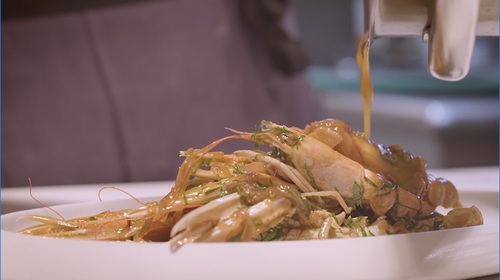
March seasonal update

From seasonal vegetables to game and seasonal fruits, read our market report to decide which ingredients to feature on your menus this month
A scent of spring is in the air and wild nettles are in season
Chefs love to forage, and nettles are one of the UK's most prolific wild plants. They start appearing mid-February and grow through spring and summer; they are easy to locate, cook, and they are highly versatile.
Despite their slightly prickly leaves, nettles make a great substitute for basil in pestos and salsas, or, like chef Rheberson Britto, can be reduced into a glaze to accompany fish.
Classics are classics for a reason - and Tommy Banks' take on nettle soup is a vast improvement on the one his nan used to eat during WWII.
Cooking with blood oranges
One of the more visually striking of the citrus family, blood oranges sadly don't grow in the UK, but flourish in temperate climates of the Mediterranean. Their sweet flavour and bright colour make them the ideal candidates for cutting into "supremes," or sections with the outer piff removed.
The most common varieties of blood orange are Moro, a deep red, slightly bitter orange; Ruby, (which, despite its name, isn't very red), Sanguinello, which is sweet, has few seeds and and bears red streaks; and Tarocco, which are very sweet and easy to peel, but inconsistent in colour.
Alex Claridge at The Wilderness makes a blood orange millefeuille, combining layers of caramelised filo pastry with yogurt, miso crémeux and blood orange three ways.
Scott Goss, meanwhile, developed a recipe for vanilla panna cotta with blood orange ice and blood orange ketchup.
Arnaud Stevens takes it down a more savoury route, making a blood orange and clove espuma to go with Atlantic hake, cured ham, sardelaise potato and artichoke puree.

whitebait - how to cook it, recipe ideas and more
Whitebait – very small fish cooked and eaten whole – is recognised all over the world, but is applied to different species reflecting what is available locally. In most of Europe, whitebait are young sprats, the small cousin of the herring.
For whitebait, the immediately obvious issue is sustainability, as sourcing large quantities of immature fish which have never spawned, without hurting the biomass, is a challenge.
And indeed, in many regions of the world whitebait fishing has dried up due to excessive fishing pressure, but European whitebait is of little concern when it comes to sustainability ratings. As of January 2019, the Marine Conservation Society rated the Baltic Sea stock as sustainable.
The classic method of cooking whitebait - that is, battering and deep frying them - calls for little alteration.
However, Tony Flemming adds a touch of smoked paprika, cayenne pepper and mustard powder to his coating, and serves them with a classic tartare sauce.

Rejoice, for leeks are in season in March
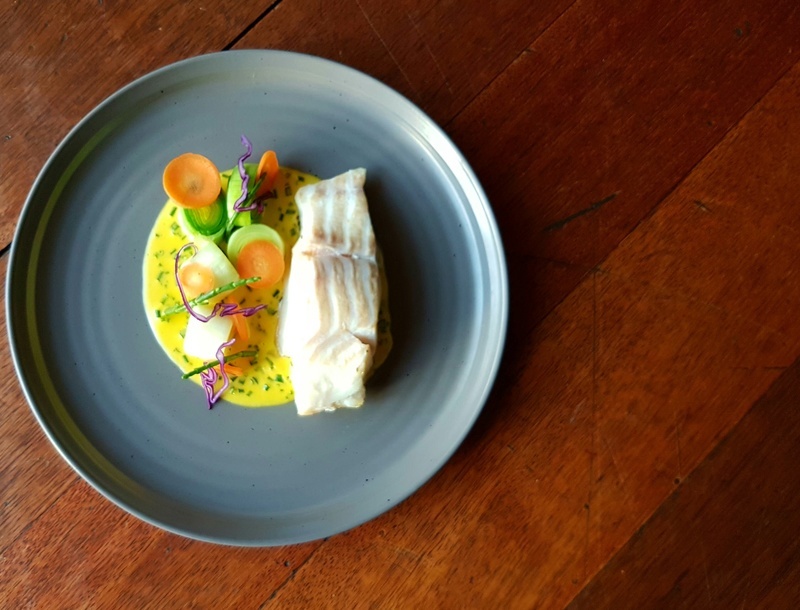
The Welsh national emblem is as versatile as it is prolific. An ancient crop, native to eastern Mediterranean lands and the Middle East, the leek is part of the allium family, along with garlic, wild garlic and onions.
Try Lisa Goodwin Allen’s wild Seabass with young garden leeks, charred Lettuce, and Iron Cross oxalis. Chad Byrne makes cod with young leeks and saffron sauce, and Nick Tulip pairs young leeks with pan-fried cod, celeriac puree, mustard & cheese crumb.
Watch Michelin-starred chef Niklas Ekstedt create ember-cooked leeks with dried reindeer:
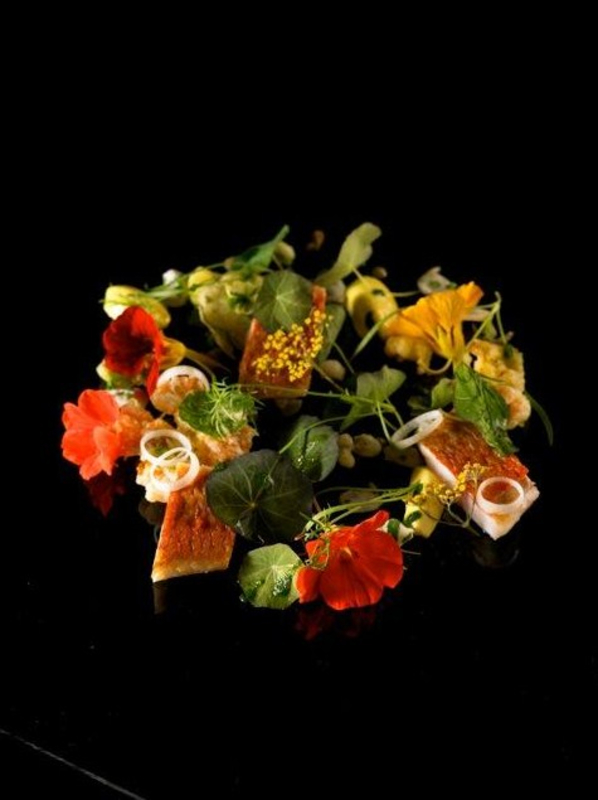
Red mullet - where to find it and how to know if it's fresh
Red mullet – or goatfish - used to only be found in Mediterranean and tropical climates at this time of year, but warmer sea temperatures mean it can be fished in British waters too.
To ensure it is fresh, check its flesh is firm, its eyes are clear and its gills are bright red.
Tom Kerridge makes red mullet with braised oxtail and beef and bay dressing, Aiden Byrne puts red mullet in a nasturtium salad with pickled cockles and capers. Why not try Angela Hartnett’s quick and easy linguine with red mullet, radicchio, chilli and garlic?
Why is hake a great substitute for cod?
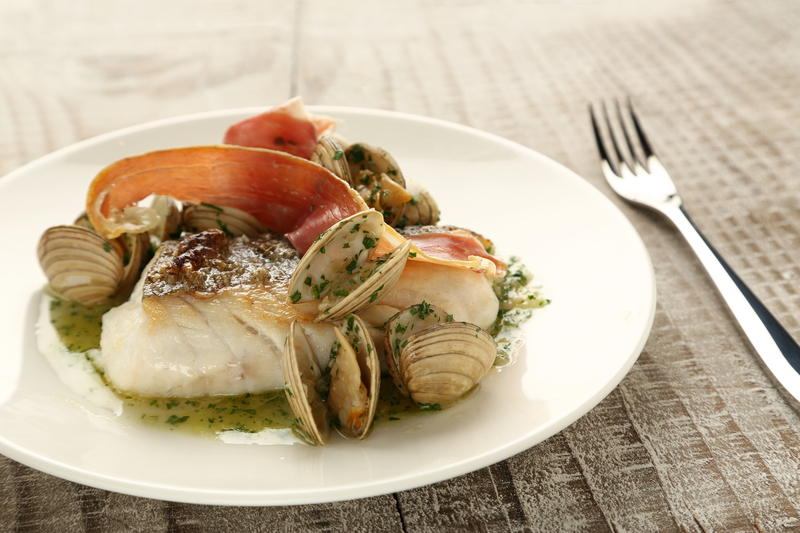
Highly favoured in Italian, Spanish and French cuisine, hake is long and slender and makes for a great steak or loin supreme. Though similar to cod, its firmer, fleshier texture means it can hold its own better than its flaky counterpart.
Pip Lacey cooks hake with pink finger radish, white asparagus, mussels and crispy shallots. Try Terry Laybourne’s saltwater roast hake with with Iberico ham, clams and dry sherry. Paul Foster suggests poaching hake and serving it with grants butter, fennel and seaweed.
Watch 3-Michelin star Chef Elena Arzak create her hake and chocolate truffle dish:
When is halibut in season?
A white-fleshed fish found in the North Pacific and North Atlantic Oceans. The largest flat fish, stocks in the Atlantic are becoming depleted so organisations dedicated to sustainability, such as Seafood Watch, recommend eating halibut from the Pacific Ocean. Halibut has a very low fat content compared to other fish. It is available most of the year round, but comes into its own in March.
How should rhubarb be served?
Rhubarb will be ready from March onwards, earlier if forced. Like the Bramley apple, it is versatile and can be used to make an alternative pudding to something apple-based. Serve it with custard or ice cream, stew it, roast it or use it in compotes, jams, crumbles, or to accompany porridge or cereal. For something a little more enticing, try this rhubarb and almond tart by Russell Brown.
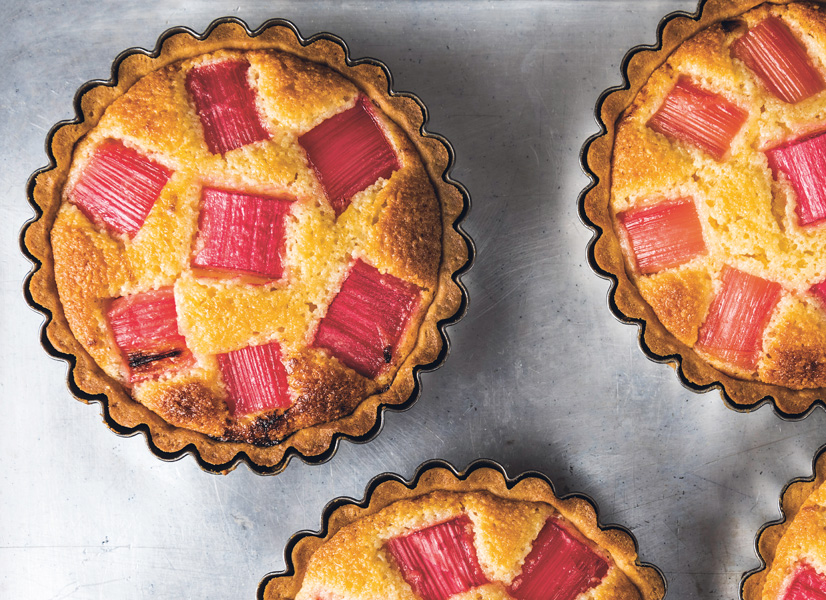
Watch Elena Arzak create a recipe with white tuna and rhubarb:
Inspiration for spinach dishes
Another vegetable which can be bought 12 months of the year, spinach is at its best from March to September.
Great raw on its own or as part of a salad, the green plant is regularly found accompanying main dishes and is a rich source of iron, many vitamins, calcium, essential acids.

Another great spinach dish is smoked haddock velouté and parsley purée, cauliflower and spinach, finished with caviar, cooked here by Michelin star chef Richard Picard-Edwards:
Are you using any of these ingredients in your menus, let us know over on @canteentweets or our Facebook page. Look out for our guide next month to see what's in season.
Is spring onion better cooked or raw?
Spring onions have a milder flavour compared to other members of the onions family.
Incredibly versatile, spring onions can be consumed raw as well as utilised in wider range of different cuisines.
Being part of the botanical Allium family, spring onions are the relatives of onions, leeks, garlic, shallots and chives. The best way to keep spring onions is to keep them in the crisper drawer of the fridge, ideally within a perforated bag with paper towels, for up to 5 days.
Watch chef patron Josh Overington expertly using spring onions in his cod cooked over coals and smoked fish broth.
Are you using any of these seasonal ingredients in your menus? Upload your pics and recipes to our Chef+ mobile app!


The Staff Canteen team are taking a different approach to keeping our website independent and delivering content free from commercial influence. Our Editorial team have a critical role to play in informing and supporting our audience in a balanced way. We would never put up a paywall and restrict access – The Staff Canteen is open to all and we want to keep bringing you the content you want; more from younger chefs, more on mental health, more tips and industry knowledge, more recipes and more videos. We need your support right now, more than ever, to keep The Staff Canteen active. Without your financial contributions this would not be possible.
Over the last 12 years, The Staff Canteen has built what has become the go-to platform for chefs and hospitality professionals. As members and visitors, your daily support has made The Staff Canteen what it is today. Our features and videos from the world’s biggest name chefs are something we are proud of. We have over 500,000 followers across Facebook, Twitter, Instagram, YouTube and other social channels, each connecting with chefs across the world. Our editorial and social media team are creating and delivering engaging content every day, to support you and the whole sector - we want to do more for you.
A single coffee is more than £2, a beer is £4.50 and a large glass of wine can be £6 or more.
Support The Staff Canteen from as little as £1 today. Thank you.
















